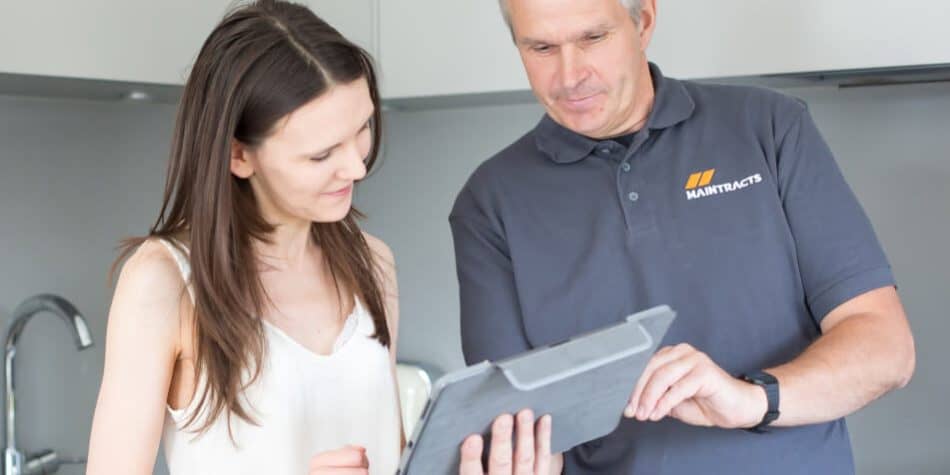When it comes to keeping your home warm, comfortable, and energy-efficient during the colder months, underfloor heating is quickly becoming the system of choice for UK homeowners. At Maintracts Services LTD, we know that understanding how to operate your underfloor heating efficiently can make a significant difference, not just to your comfort, but also to your energy bills and long-term system performance.
Whether you've recently installed underfloor heating, are thinking about an upgrade, or simply want to optimise how you use your current system, this guide will help you make the most of it. We'll break down the most efficient ways to run it, the science behind constant low-level heating, thermostat placement tips, and more, plus answer some of the most common questions homeowners ask us.
Need expert advice or a home heating check-up? Call us on 020 8682 2244 or drop an email to info@maintracts.co.uk. For year-round performance, don't forget to browse our seasonal heating tips.
Maximise your underfloor heating efficiency with help from Maintracts Services LTD. Our team will ensure your system runs smoothly, effectively, and affordably—every day of the year.
Why Leave Underfloor Heating (UFH) On Constantly In Winter?
Underfloor heating works more like a radiant floor radiator; warm water flows beneath your flooring (50 – 100 mm under the surface), slowly warming the substructure before the room heats up. When it's cold, it can take around two hours to heat up from cold; if kept warm, you maintain momentum and prevent energy-hungry spikes.
An Easy, Efficient Heating Schedule
- Morning Boost (6–8 AM): Raise thermostat to about 21 °C—perfect for getting ready.
- Daytime: Reduce to around 16–18 °C, or lower if you're out.
- Evening Comfort: Bounce back to 21 °C as you unwind.
- Overnight: Drop to ~14 °C for sleeping comfort and energy efficiency.
The trick: never let the system go stone cold, ease between temperatures instead of turning it off entirely, saving the energy it takes to reheat from zero.
Underfloor Vs Traditional Radiators
If talking about underfloor heating vs traditional radiators, radiators warm the air fast because the metal casing heats up quickly, but only in their immediate vicinity, leading to uneven warmth (warm air at ceiling height, cool at ankle height). UFH offers far more uniform, radiant heat that warms you directly from the floor up.
UFH Pairs Perfectly With Future-Proof Heating
Since underfloor systems operate at much lower temperatures (often just 30–40 °C compared to 60–70 °C in radiators), they align beautifully with eco-friendly systems like heat pumps, making them prime candidates for energy-efficient, low-carbon homes.
Placement Of The Thermostat Matters
Thermostats should be placed in neutral spots like hallways or main living spaces, not near heat sources such as direct sun, TVs, radiators, or ovens. Misplaced sensors will skew the readings and cause inefficiency.
Smart Tips (Bonus Section!)
- Install Zoning & Programmable Controls: Heat only areas in use.
- Insulate Well: Minimises heat loss and lowers running costs.
- Maintain Regularly: Annual checks and bleeding ensure smooth and efficient operation.
FAQs
What makes underfloor heating efficient?
We find underfloor heating efficient because it operates at lower temperatures, distributes heat evenly, and retains warmth in the floor's thermal mass, helping us avoid energy spikes and reduce heat loss compared to traditional systems.
Is wet underfloor heating more efficient than electric?
Yes, wet underfloor heating is what we prefer for whole-home setups. It circulates warm water at lower temperatures and works perfectly with boilers or heat pumps. Electric UFH, on the other hand, suits smaller or individual rooms.
What is the ideal flow temperature for underfloor heating?
We typically set the flow temperature between 30 °C and 40 °C. It's the sweet spot, warm enough for comfort, low enough to remain efficient, and perfectly compatible with eco-friendly heating systems.
How much energy can underfloor heating save?
We've seen homes save between 10% and 20% annually. Because the system maintains consistent warmth at lower temperatures, especially when paired with good insulation and smart zoning, it avoids energy waste.
What are the best floor coverings for efficient underfloor heating?
In our experience, tile, stone, and thin engineered wood work best; they conduct heat efficiently. We avoid thick carpets or heavy underlays, as they tend to block heat and reduce system performance.
Can underfloor heating be used with a heat pump?
Absolutely, we often recommend pairing underfloor heating with a heat pump. Since both operate efficiently at lower temperatures, they complement each other and create a sustainable, cost-effective heating solution.
How does underfloor heating compare to traditional radiators?
We find underfloor heating more efficient and comfortable. It warms the room from the floor up, providing even, radiant heat. Radiators heat quickly but unevenly and tend to leave cold spots.
How can we make our existing underfloor heating system more efficient?
We focus on zoning, installing smart thermostats, checking insulation, and scheduling regular maintenance like bleeding wet systems. These steps help our clients get the most out of their UFH setup.
Does underfloor heating work in older homes?
Yes, it can be retrofitted using low-profile systems and proper insulation. We've installed underfloor heating in many older properties, and with the right approach, it works beautifully.
What's the best way to control underfloor heating zones?
We always recommend using programmable thermostats in each zone. This allows us to customise heating schedules based on room use, saving energy while keeping each space perfectly comfortable.
Conclusion
Keeping your UFH gently warming around the clock, rather than switching it off, saves you fuel, reduces wait times, and keeps you consistently cosy. It's a little like keeping a strongman moving, not stopping entirely, just modulating effort. Need help fine-tuning the system or exploring heat pumps? Contact our Maintracts team, we'd love to help! Call us on 020 8682 2244 or email info@maintracts.co.uk today!

